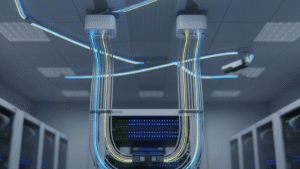In modern IT infrastructures, networking equipment forms the backbone of communication, data transfer, and system integration. From switches and routers to wireless access points and networked storage devices, the performance and reliability of these devices are critical to both enterprise operations and end-user experiences. Yet, an often-overlooked component plays a central role in ensuring that these devices operate seamlessly: the power adapter. Though small and seemingly inconspicuous, a well-designed power adapter ensures the stable, consistent, and safe delivery of energy that networking equipment demands.
Power stability is essential for networking devices that operate continuously in enterprise environments. Even minor fluctuations in voltage or current can trigger unexpected reboots, data transmission errors, or hardware failures. High-quality power adapters address this by providing precise voltage regulation, minimizing ripple and noise, and incorporating multiple layers of protection such as overcurrent, overvoltage, and short-circuit safeguards. These features allow switches, routers, and access points to function without interruption, ensuring that network traffic remains uninterrupted and critical services continue to operate.
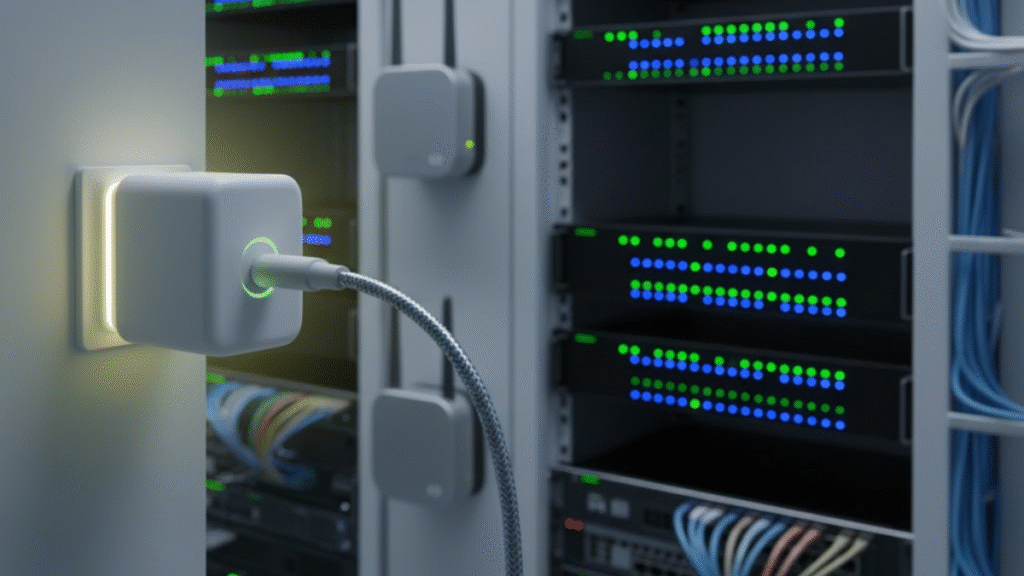
The Role of Power Adapters in Network Stability
Network reliability does not merely depend on the internal circuitry of switches and routers; it heavily relies on the quality of their external power sources. Power adapters serve as the interface between the AC power grid and the sensitive electronics of networking devices, translating fluctuating input voltages into a consistent DC output suitable for delicate circuits. In doing so, they protect against common electrical issues like surges, spikes, and brownouts, which can otherwise compromise device integrity and lead to costly downtime.
Smaller devices, such as access points and network cameras, often require lower-wattage adapters. Here, 24W power adapters provide an ideal solution, offering sufficient energy for stable operation without overloading circuits or generating unnecessary heat. Their compact size and high efficiency make them suitable for deployments in confined spaces, such as office ceilings or wall-mounted units, while still delivering reliable performance. For slightly larger devices, including mid-range switches and small network hubs, 36W power adapters strike the perfect balance between output capacity and energy efficiency, ensuring uninterrupted operation over long periods.
PoE and Modern Network Power Trends
The evolution of Power over Ethernet (PoE) has transformed how networking equipment receives power. PoE allows devices like IP cameras, wireless access points, and VoIP phones to draw both data and power through a single Ethernet cable, simplifying installation and reducing the need for multiple power outlets. This advancement, however, places additional demands on power adapters, which must support higher voltage outputs and precise current control to ensure safety and stability.
Even in non-PoE deployments, the increasing energy requirements of modern networking equipment make efficient power delivery more important than ever. High-quality adapters ensure that devices operate within their optimal voltage range, reducing thermal stress and extending component life. By selecting the appropriate wattage, such as 24W for smaller edge devices or 36W for mid-range network equipment, network administrators can achieve a balance between power efficiency, device performance, and system reliability.
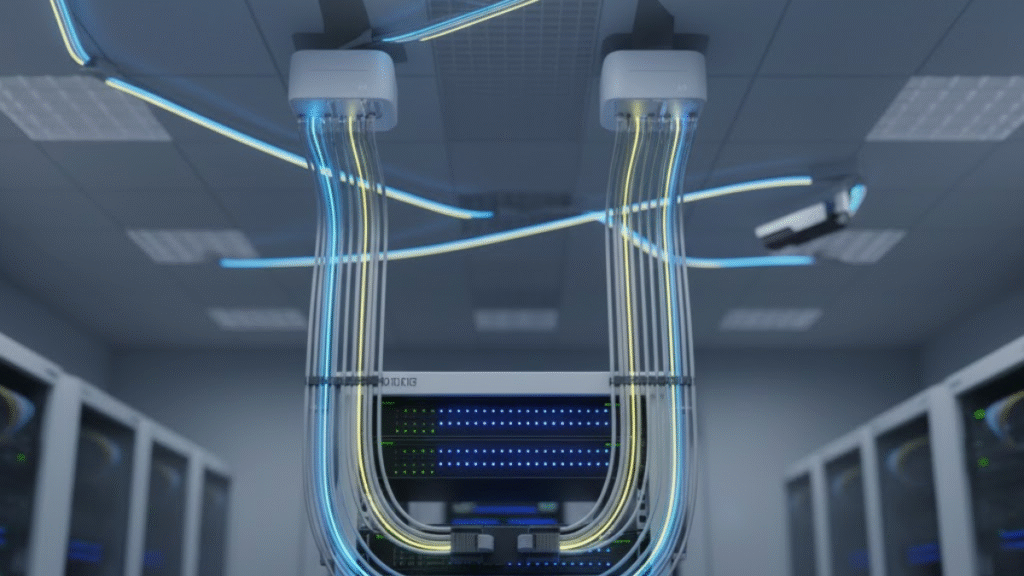
Efficiency, Sustainability, and Cost Considerations
Energy efficiency has become a critical metric in modern network infrastructure planning. Power adapters with high conversion efficiency reduce energy waste, lower operating costs, and decrease heat generation, which in turn minimizes the need for additional cooling solutions. This is especially important in environments like data centers and server rooms, where hundreds of devices may operate simultaneously.
24W and 36W power adapters not only provide the necessary power for individual devices but do so with minimal energy loss. For organizations looking to optimize operational costs while maintaining a green footprint, selecting energy-efficient adapters contributes directly to sustainability goals. These devices operate quietly and generate less heat, allowing networking equipment to function optimally without additional thermal management, which further reduces long-term maintenance costs.
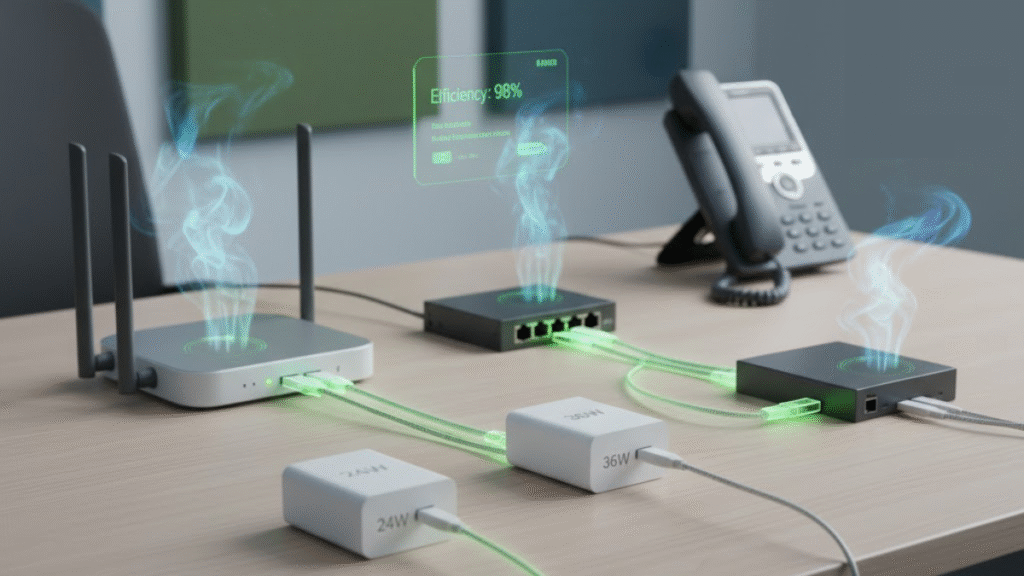
Safety, Certification, and Global Compatibility
Network administrators must also consider the safety and compliance aspects of power adapters. Certified adapters that meet international standards, such as UL, CE, or IEC requirements, assure that devices are protected against electrical hazards. Features such as insulation, surge protection, and thermal cutoffs prevent accidents, protect networking equipment, and ensure compliance with regulatory requirements in different markets.
Global compatibility is another key consideration. Networking equipment deployed across multiple regions often encounters varying power grid standards. Power adapters that support a wide input voltage range, typically from 100V to 240V AC, ensure that devices operate reliably regardless of location. Both 24W and 36W adapters are commonly designed with this versatility in mind, making them suitable for international deployments without compromising safety or performance.
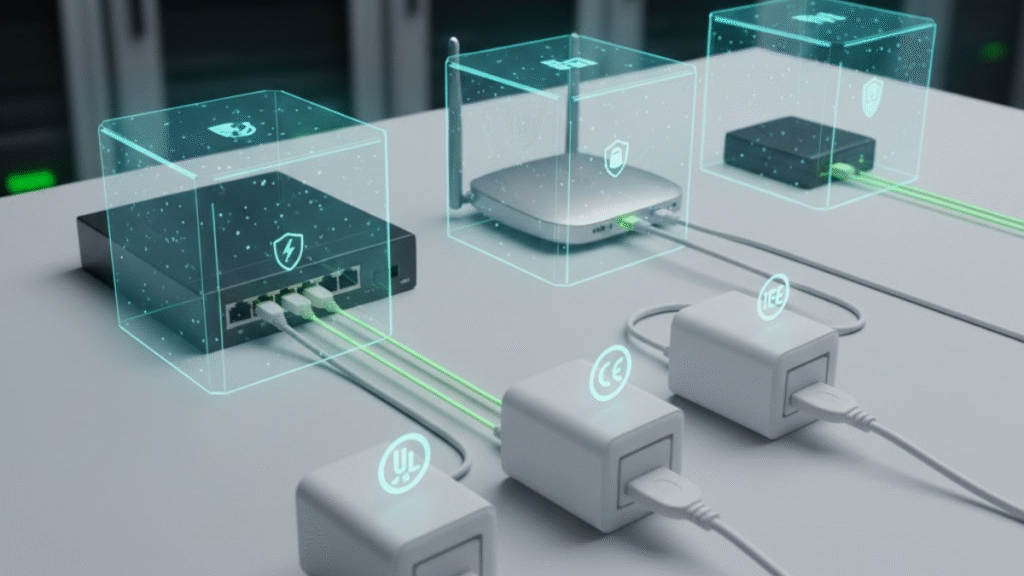
Recommended Solutions: 24W and 36W Power Adapters
Selecting the right power adapter is not just a technical choice; it’s a strategic decision that affects the long-term reliability and efficiency of networking infrastructure. For smaller devices like access points, network cameras, and VoIP phones, 24W adapters provide ample power while maintaining compact form factors and high efficiency. They deliver stable voltage with minimal ripple, ensuring continuous operation even in environments with fluctuating electrical conditions.
For slightly larger network equipment, including mid-range switches, small hubs, and devices with additional features such as PoE support, 36W adapters offer a reliable solution. These adapters provide a higher energy margin, accommodate occasional load spikes, and maintain performance stability over extended operating periods. Both 24W and 36W adapters are versatile, energy-efficient, and designed to meet rigorous safety and regulatory standards, making them essential components for modern network deployments.
Real-World Applications and Case Studies
Consider a mid-sized enterprise deploying a network of wireless access points throughout its offices. Each access point requires a reliable source of power to handle high data throughput and maintain seamless connectivity. Using 24W adapters, the organization can ensure that each device receives consistent energy, minimizing network disruptions and extending device life. Similarly, a small branch office with several PoE-enabled switches can leverage 36W adapters to provide sufficient power to multiple endpoints simultaneously, simplifying cabling infrastructure while maintaining system reliability.
In larger-scale deployments, such as corporate headquarters or campus networks, the combination of multiple wattage adapters enables administrators to match power delivery precisely to device requirements. This approach reduces energy consumption, lowers operating costs, and ensures that each networking device operates under optimal conditions, safeguarding both performance and investment.
Conclusion: Choosing the Right Power Partner
Networking equipment is only as reliable as the power that drives it. High-quality power adapters, whether 24W for smaller devices or 36W for mid-range equipment, play an indispensable role in maintaining network stability, efficiency, and safety. They protect sensitive electronics from voltage fluctuations, enable energy-efficient operation, and meet rigorous global compliance standards.
By carefully selecting power adapters that match the specific requirements of your networking equipment, organizations can ensure uninterrupted operation, reduce energy costs, and extend the lifespan of critical devices. In a world increasingly dependent on seamless connectivity, the humble power adapter stands as a silent guardian, delivering the energy that keeps networks running smoothly. Investing in the right power solution is not merely a technical choice—it is a commitment to reliability, efficiency, and long-term operational success.

